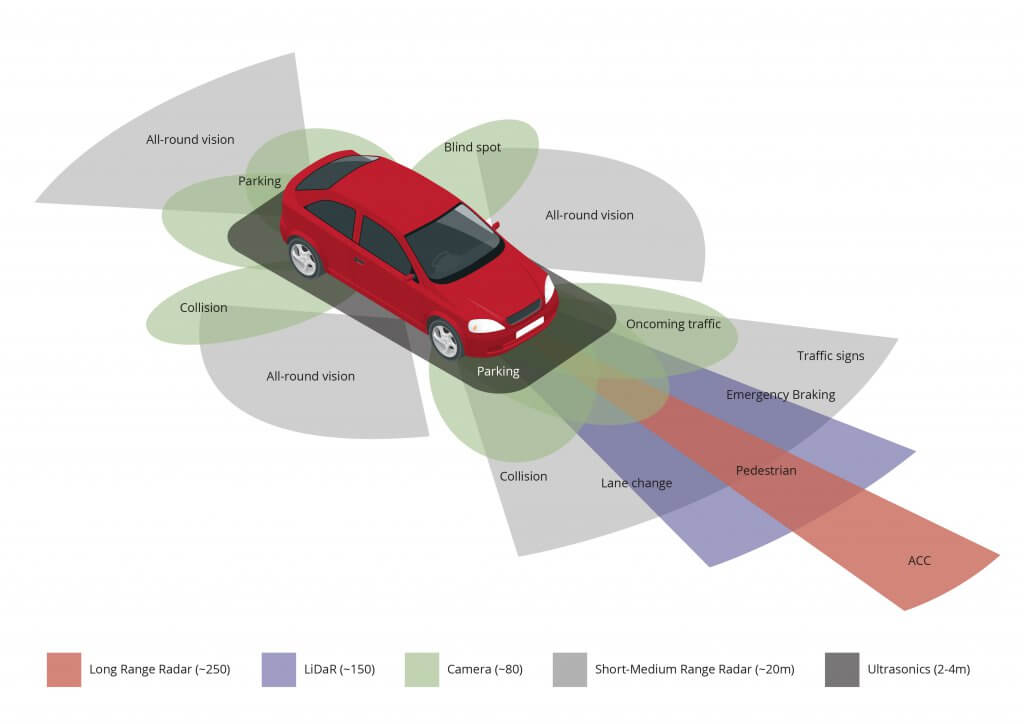What is windscreen calibration, or ADAS calibration?

Advanced driver assistance systems (ADAS) increase vehicle safety and promotes better driving habits. A vehicle with ADAS is capable of alerting the driver to potential hazards on the road and can even assume control of the vehicle at a critically dangerous moment.
For example, ADAS-fitted cars apply the emergency brakes faster than a human driver, should a pedestrian walk into the road from behind parked cars. It’s an excellent step forward for safety in the motor industry but it is one that will make windscreen replacement ever so slightly more complicated.
This is because of the sensors mounted in that windscreen, which require recalibration after a new windscreen is fitted.
What is windscreen calibration?
An ADAS equipped windscreen has a stereo camera, radar and LiDAR mounted behind the windscreen glass, under the rear view mirror. When a windscreen replacement is carried out, these systems must be recalibrated to ensure that the car is detecting an accurate picture of the road ahead, to the sides and behind the vehicle.
This is because front facing devices work in unison with other sensors and cameras around the car to form a complete picture of the road conditions around the vehicle.
A recalibration is carried out under workshop conditions using digital measures, laser levels and other clever technology to centre the cameras and sensors. This is known as static calibration.
Dynamic calibration is carried out by the car itself. This process simply involves driving the car and letting its onboard systems make the final touches to the calibration process.
Why do I need windscreen calibration?
Windscreen calibration ensures that you car is set up correctly for the onboard sensors and camera to work properly. ADAS is a highly attuned safety feature that enhances driving to an impressive degree and even reduces the insurance premiums on vehicle fitted with such electronic assistances, due to features such as the collision avoidance systems and driver drowsiness detection.
What does windscreen calibration affect?
Misaligned cameras have a knock-on effect on all ADAS systems. If your vehicle is fitted with any of the following, your cameras will require calibration:
- Adaptive cruise control
- Adaptive high beam
- Adaptive light control
- Automatic parking
- Automotive navigation system providing up-to-date traffic information
- Automotive night vision
- Blind spot monitor
- Collision avoidance system
- Crosswind stabilization
- Driver drowsiness detection
- Driver monitoring system
- Emergency driver assistant
- Forward collision warning
- Glare-free high beam
- Hill descent control
- Intelligent speed adaptation/advice
- Junction assistant
- Lane departure warning system
- Lane change assistance
- Pedestrian protection system
- Traffic sign recognition
- Turning assistant
- Vehicular communication systems
When do I need to have windscreen calibration?
If your vehicle has an ADAS system fitted, you will benefit from having it recalibrated from time to time. Typical reasons to recalibrate the cameras and sensors include:
- After your windscreen has been replaced
- When the dashboard is showing a fault code
- When your camera has been disconnected for whatever reason
- Changes or repairs to the suspension
- Changes to the wheel alignment, such as when having tyres replaced
Motorway Windscreens provide fast, reliable windscreen repairs and replacements throughout Leeds, Grimsby, Sheffield, Doncaster, Chesterfield, Barnsley and many locations throughout the UK. We pride ourselves on our prompt response, quality workmanship and excellent customer service, so you can rest assured knowing that you are in the hands of experts when coming to us. Contact us today to book your windscreen repair or replacement.
